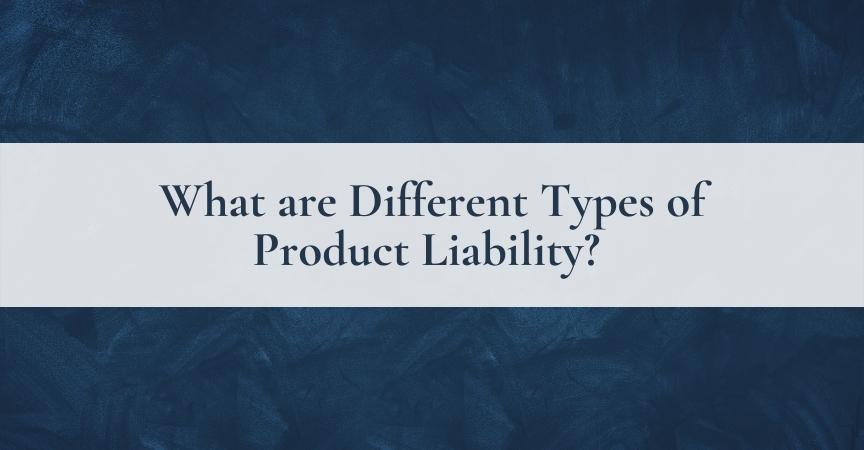Product Liability Consumers trust that when they purchase a product it will have been appropriately designed and manufactured without dangerous defects. Despite laws and regulations put in place by The United States Consumer Product Safety Commission to protect the public against unreasonable risks of injury associated with consumer products, instances occur where companies or manufacturers do not create inherently safe products that still find their way to market. When companies or manufacturers act in negligence or sidestep regulations causing injury or death, they can be held liable.
Product liability is a broad area of law that covers a multitude of issues surrounding the manufacturing and usability of products that cause injury. Every aspect of the manufacturing process can potentially hold liability for a product, from the production of parts at the top of the manufacturing chain to retail distribution at the bottom of the manufacturing chain. In short, multiple defendants can be involved in a single product liability suit. Some common defects that create product liability include:
Defective Design
Missing safeguards or elements that prevent misuse are examples of defective designs that can potentially cause injury. Locking lids on pressure cookers or blade guards on lawn equipment are examples of past defective designs that have led to a lawsuit. Defective designs are often traced to the initial stages of product development. Lawsuits help hold manufacturers accountable for redeveloping safe products.
Hidden Defect
Defects of some products, specifically medical devices or medications, are not always known until they are in use and cause additional injury or illness to a person. Food poisoning due to contaminated materials or a dirty manufacturing plant is considered a hidden or latent defect. Similarly, products contaminated with toxic materials such as lead or asbestos that are known to lead to illness or injury years after the use of the product also fall into this category.
Failure to Warn
Manufacturers are required to label products with adequate warnings of possible injuries or potential harm. A product can be made dangerous or more dangerous in use with the failure to provide appropriate labeling that can result in injury.
Malfunction
When a product does not work as intended there is a potential for injury. Devices with an automatic shut-off or machines that can potentially emit toxic fumes have been the subject of malfunctioning product lawsuits in the past.
Depending on the circumstances of the injury caused by a product, your lawyer may be able to allege negligence, strict liability, or breach of the warranty in a lawsuit. The array of variables and potential for multiple defendants in a product liability case adds to its complexity.
The attorneys at Kramer, Dillof, Livingston & Moore (KDLM) in New York have experience successfully representing individuals who have been hurt by defective or improperly manufactured products. For example, in 2017, Thomas Moore obtained a $39.5 million verdict for a former NYU Student who fell from an unguarded fire escape, whose design was outlawed. The verdict was one of the largest in New York State.
The product liability attorneys at KDLM understand the complexities of bringing a successful product liability action. We will discuss your situation with you in complete confidence, and there is never a charge for a consultation. Call us today at (212) 618-6800.

